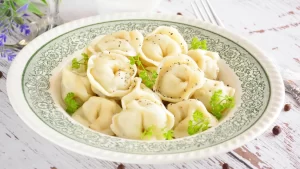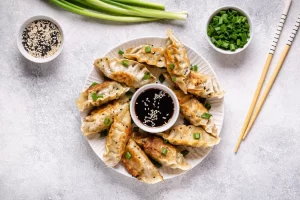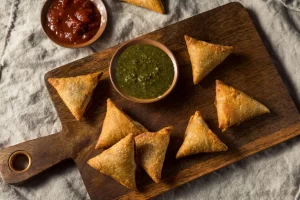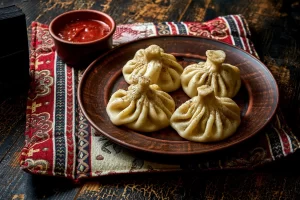Uszka are similar to Polish pierogi – the word “uszka” means “ear” in Polish. They are usually stuffed with minced meat and mushrooms and added to borscht.
Uszka stuffed with porcini mushrooms and chopped onions without meat are served in plain borscht for Christmas Eve dinner in Poland.

Similar to Chinese sausages, Japanese gyoza are usually made with thin wrappers and filled with minced pork.
Frozen gyoza can be found in most grocery stores around the world, but the best gyoza restaurants always turn out to be hole-in-the-walls outside Tokyo subway stations.

Found on Chinese menus predominantly in the United States, crab rangoon are deep-fried dumplings served as a side dish.
They are filled with cream cheese and imitation crab meat made from fish paste.
It may not be authentic Chinese food, but the love for fried cheese transcends cultures.

Atypical stuffed pork dumplings, Teochew fun gor are usually filled with peanuts, chives, dried shrimp, pork, radish, mushrooms, and coriander.
The casing is made from a combination of wheat flour, tapioca flour, cornstarch, and potato starch, which gives fun gor its transparent appearance.
Teochew fun gor is most popular in Cantonese dim sum restaurants.

Usually triangular in shape, samosas are a deep-fried snack popular in South and Southeast Asia.
They can be stuffed with a variety of fillings, including potatoes, onions, peas, lentils, and ground lamb.

It's not often that a country like Georgia, located on the border of Eastern Europe, Russia, and Central Asia, has its own kind of dumplings.
Khinkali are similar to xiaolongbao. They are formed by thickening the folds of the wrapper at the top and filling it with spicy beef and pork meat.
Khinkali are usually served with coarsely ground black pepper.


